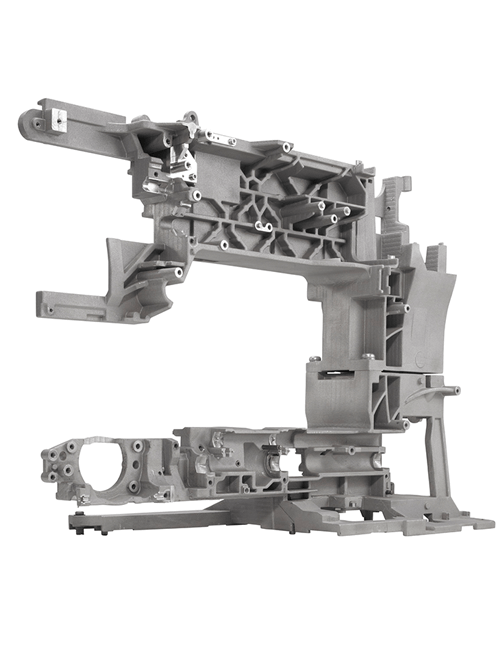Low pressure casting
BENEFITS
Parts made using low-pressure die casting are accurate and precise. This is because the mold is filled slowly at a constant temperature and pressure. The high dimensional accuracy associated with this process is important for small castings that need to be assembled after manufacturing.
FEATURES
The molten metal flows quickly and smoothly through the feed pipe, reducing oxide formation and preventing porosity.
BENEFITS
Because the process is carried out at low pressure and fills the mould slowly, no slag forms, resulting in very pure castings. In other die casting processes, especially high pressure die casting, it is common for slag to form on the surface of the liquid metal. However, because casting is carried out in an upward motion, the slag does not leave the holding furnace when the metal is pumped.
FEATURES
Low pressure die casting achieves extremely high purity because there is little or no slag. It reduces the chance of slag entering the mold.
BENEFITS
Low-pressure die casting has good formability as it produces metal parts that will not crack or deform. Therefore, it is suitable for manufacturing parts with complex shapes and designs.
FEATURES
Low pressure casting produces higher quality castings. Carefully regulated uniform metal flow, coupled with reduced turbulence, results in improved dimensional accuracy. Standard tolerances for low pressure cast products are set at +/- 0.005″ for the first inch and +/- 0.003″ for each additional inch thereafter. A minimum draft angle of 0.5 degrees is recommended to ensure a successful casting.
Applications & Grades
Low-pressure die casting produces most automotive parts, such as wheels, engine blocks and suspension components. Unique metallurgical quality and cost-effective processing. In addition to the automotive industry, it is also widely used in the electronics field.
- Wheels & Cylinder Heads
- Engine Block
- Suspension components
- X-ray and diagnostic machines

